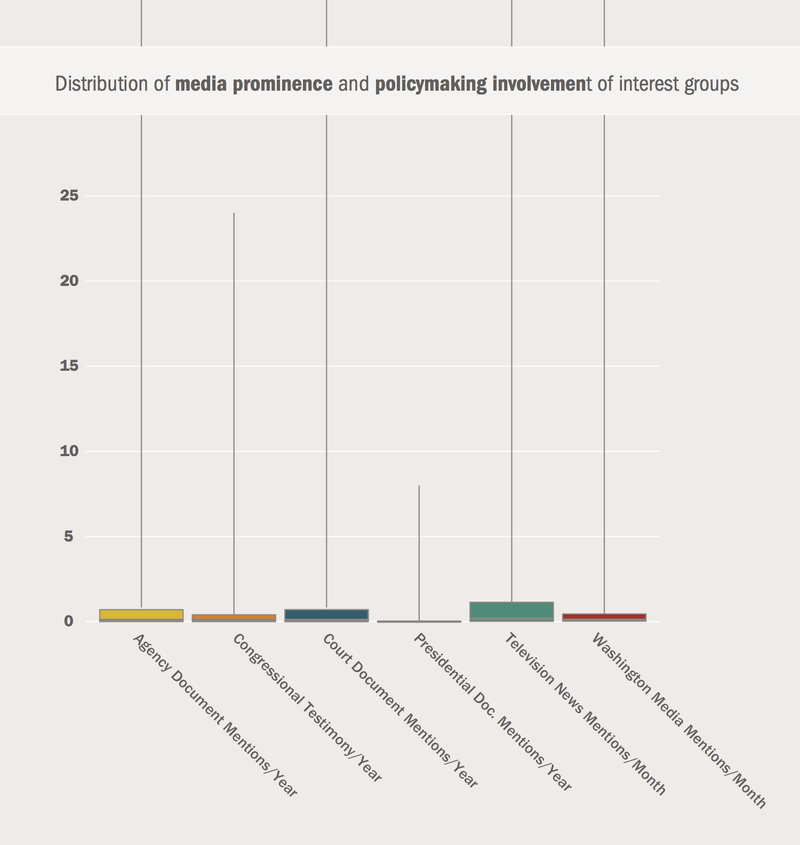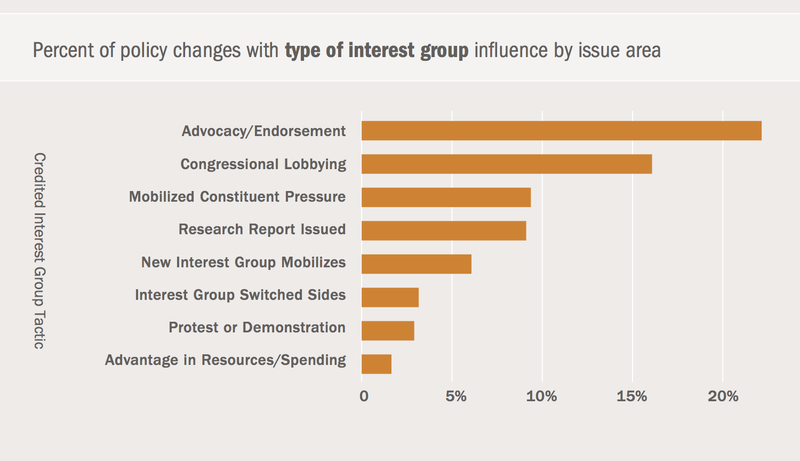What it takes to be a major player in policymaking
Both Presidents Obama and Bush succeeded in passing major health care legislation. They shared an important ally: The AARP supported both the Medicare Modernization Act (the prescription drug benefit program) in 2003 and the Affordable Care Act (Obamacare) in 2009. Each White House sought their endorsement and helped craft provisions designed to win their support.
AARP is one of a small subset of interest groups that can command this level of attention from policymakers. It has become a well-known major player in government. Data from Sunlight’s Influence Explorer show that it has spent hundreds of millions on lobbying and is also a major campaign contributor (when including employee contributions). Although it is natural to assume that the money bought the influence, the organization has other important assets like 19 million members and a long history of policymaking involvement.
Despite considerable scholarly attention, political scientists have found it surprisingly difficult to show that spending more money on campaign contributions or lobbying consistently helps pass or defeat legislation. Studies of the influence of money on final votes in Congress have been mixed at best. An exhaustive study of resources on each side of 98 policy issues found no consistent evidence that more lobbying or campaign dollars led to victory. Our best evidence of the systematic influence of more spending comes from studies of direct economic benefits secured for specific interests, such as earmarks and tax loopholes.
Campaign and lobbying dollars may still have effects on broader policy change. Studies have shown that they influence the time that legislators spend on an issue and recent evidence shows that identifying as a donor improves a group’s access. Better data at the state level has allowed studies that show more direct effects of money on the progress of legislation.
My own view is that the capacity for influence on significant policy is a rare commodity possessed only by the major players in the interest group community. Securing major policy change is a difficult enterprise, and few groups seem up to the task. The status quo usually wins; only a few groups pushing for large policy changes are likely to succeed.
In my first book, The Not-So-Special Interests, I show that the distributions of media prominence and policymaking involvement are highly skewed, with a small subset of groups accounting for most opportunities for influence.
Figure 1 below visualizes these distributions. The vast majority of interest groups are clustered at the bottom of the distribution; they rarely have a voice in public discussion or policymaking. The two factors that best predict which organizations end up at the top of the distribution are longevity (how long have they been in Washington) and political staff size (internal lobbyists), rather than campaign contributions or use of lobbying firms.

My new book, Artists of the Possible, takes a long-term view of policy change since 1945. I find reported interest group influence on policy highly concentrated. Policy historians credited nearly 300 different interest groups with at least one policy change, but fewer than 10 percent of them were responsible for three or more policy changes. A few longstanding major players like the AFL-CIO, the National Association of Manufacturers and the U.S. Conference of Mayors were credited with several policy changes over decades.
When policy historians credited interest groups with policy change, the most common mechanism was advocacy or an endorsement. Specific groups were credited with developing ideas, writing legislation or publicly working on behalf of policy change. Figure 2 below reports what percent of major policy changes involved each type of interest group influence (as reported by historians explaining it). Congressional lobbying and mobilizing calls to Congress were also mentioned frequently, but usually in conjunction with general advocacy. The story, at least as told by policy historians, was about a well-known group taking a leadership role, rather than one side having a lot more resources than the other.

Other research also points to the outsized influence of a few established interests. Interest groups seek to build identities and a few are seen as representatives of constituencies and expert stakeholders. The degree of disagreement among major interest groups in an issue area, rather than the relative resources of each side, often determines whether any legislation can pass. A new study of more than 1,200 issues finds that the positions of the top 25 interest groups and 10 industries in Washington influence what policies Congress adopts.
Evidence from other branches of government points in the same direction. Even though interest groups cannot give directly to federal administrators and judges, agencies and courts still listen to their input. In notice-and-comment rulemaking, agencies usually change the rules in the direction interest groups ask and water down the regulations on business. Federal courts respond to the interest groups with powerful reputations (rather than just to the number of groups on each side) and their opinions lift language directly from the most prominent interest group briefs.
Of course, interest groups do not become major players without sizable resources. Even if there is no universal way to translate money into policy results, the interest groups that become the most central players still spend a fortune building their reputations. AARP serves as a useful demonstration: It has become taken for granted as the representative of older Americans and the defender of entitlements. Achieving that status required a lot of work and resources — and it still spends heavily on lobbying every year. Given its long-term reputation, however, each dollar they spend is now worth more. Conservative groups claiming to represent older Americans occasionally spend significantly on campaigns or lobbying, but they have little chance to supplant AARP. For a small subset of groups with reputations like AARP, an endorsement can matter for the fate of legislation.

